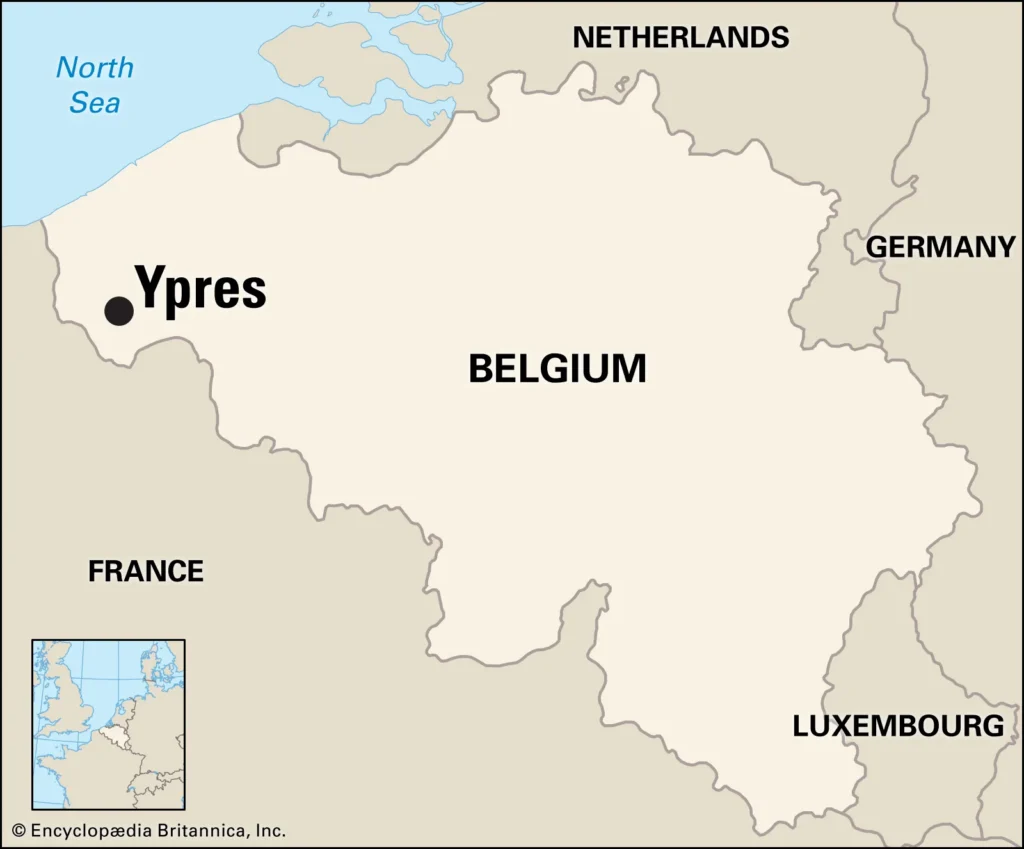World War I was a conflict marked by immense tragedy and profound bravery. Amidst the harrowing battles and the brutal realities of trench warfare, stories of heroism and legend emerged, providing solace and inspiration to soldiers and civilians alike.
One of this era’s most intriguing and mysterious tales is the legend of the Phantom Army of Ypres, also known as the Ghostly Bowmen. This story, steeped in myth and wartime morale, captures the imagination of history enthusiasts and folklore lovers.
The Setting: The First Battle of Ypres
The story of the Phantom Army is set against the backdrop of the First Battle of Ypres, which took place in 1914 in the Belgian town of Ypres (known as Ieper in Dutch). This battle was one of the earliest and most significant confrontations on the Western Front, involving British, French, and Belgian forces clashing with the advancing German army.

The battle was characterized by fierce fighting and heavy casualties. Soldiers endured relentless artillery bombardments, machine-gun fire and brutal hand-to-hand combat. Amidst this chaos and devastation, a legend was born that would provide a glimmer of hope and a sense of supernatural protection to those fighting in the trenches.
The Legend of the Phantom Army
The legend of the Phantom Army centers on a miraculous intervention by ghostly archers believed to be the spirits of medieval English bowmen who had fought at the Battle of Agincourt in 1415. According to the story, these spectral warriors appeared during the darkest moments of the First Battle of Ypres to aid the beleaguered British troops.
As the tale goes, when the German forces seemed on the verge of overwhelming the exhausted and outnumbered British soldiers, a mysterious fog rolled in, and the ghostly archers emerged. With their longbows drawn, they unleashed a barrage of arrows upon the enemy, halting the German advance and turning the tide of battle in favor of the Allies.
Origins of the Legend
The legend of the Phantom Army can be traced back to a short story published in 1914 by British author Arthur Machen, titled “The Bowmen.” In this story, Machen describes how British soldiers, facing imminent defeat at the Battle of Mons, prayed for divine intervention. Their prayers were answered by the appearance of ghostly bowmen from the Battle of Agincourt, who came to their rescue.
Machen’s story was published in the London Evening News and quickly captured the public’s imagination. Although Machen intended the tale as a work of fiction, many readers believed it to be a true account. The story spread rapidly, evolving and merging with the real events of the First Battle of Ypres, eventually becoming an enduring wartime legend.

The Power of Myth and Morale
The legend of the Phantom Army resonated deeply with soldiers and civilians alike, serving as a powerful morale booster during a time of immense suffering and uncertainty. The idea that fallen heroes from a glorious past could return to aid their descendants provided comfort and a sense of continuity with history.
For soldiers in the trenches, the story offered hope and reassurance that they were not alone in their struggle. It reinforced the belief that they were fighting for a noble cause, supported by the spirits of those who had fought and died for England in centuries past.
Eyewitness Accounts and Skepticism
While the Phantom Army’s legend captured many’s imagination, it also faced skepticism and scrutiny. Some dismissed the story as mere wartime propaganda designed to boost morale and rally support for the war effort. Others speculated that the legend might have been influenced by real but misunderstood phenomena, such as the psychological effects of combat, optical illusions, or even natural occurrences like fog and mist.
The Enduring Legacy
Over a century later, the legend of the Phantom Army of Ypres continues to fascinate and inspire. It serves as a poignant reminder of the power of myth and storytelling in times of crisis. The tale has been retold in various forms, from books and documentaries to plays and reenactments, ensuring that the ghostly bowmen remain a part of the collective memory of World War I.

